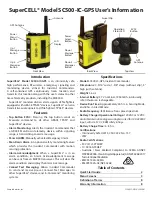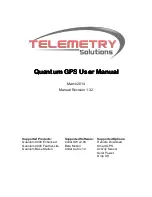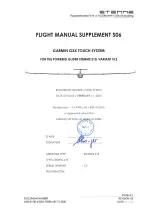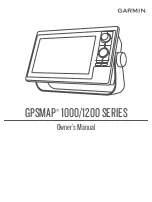
CAP 413
Radiotelephony Manual
Chapter 2 Page 1
Chapter 2
Radiotelephony
1
General Procedures
1.1
Introduction
Radiotelephony provides the means by which pilots and ground personnel
communicate with each other. Used properly, the information and instructions
transmitted are of vital importance in assisting in the safe and expeditious operation
of aircraft. However, the use of non-standard procedures and phraseology can cause
misunderstanding. Incidents and accidents have occurred in which a contributing
factor has been the misunderstanding caused by the use of non-standard
phraseology.
The importance of using correct and precise standard phraseology
cannot be over-emphasised.
1.2
Transmitting Technique
1.2.1
The following transmitting techniques will assist in ensuring that transmitted speech
is clearly and satisfactorily received.
a) Before transmitting check that the receiver volume is set at the optimum level and
listen out on the frequency to be used to ensure that there will be no interference
with a transmission from another station.
b) Be familiar with microphone operating techniques and do not turn your head away
from it whilst talking or vary the distance between it and your mouth. Severe
distortion of speech may arise from:
i) talking too close to the microphone;
ii) touching the microphone with the lips; or
iii) holding the microphone or boom (of a combined headset/microphone system).
c) Use a normal conversation tone, speak clearly and distinctly.
d) Maintain an even rate of speech not exceeding 100 words per minute. When it is
known that elements of the message will be written down by the recipients, speak
at a slightly slower rate.
e) Maintain the speaking volume at a constant level.
f) A slight pause before and after numbers will assist in making them easier to
understand.
g) Avoid using hesitation sounds such as ‘er’.
h) Avoid excessive use of courtesies and entering into non-operational conversations.
i) Depress the transmit switch fully before speaking and do not release it until the
message is complete. This will ensure that the entire message is transmitted.
However, do not depress transmit switch until ready to speak.
j) Be aware that the mother tongue of the person receiving the message may not be
English. Therefore, speak clearly and use standard radiotelephony (RTF) words and
phrases wherever possible.
k) Messages should not contain more than three specific phrases, comprising a
clearance, instruction or pertinent information. In cases of doubt, e.g. a foreign
pilot having difficulty with the English language or an inexperienced pilot unsure of
the procedures, the controller should reduce the number of items and if necessary
these should be passed, and acknowledged, singly.
31 March 2011
Содержание 413
Страница 1: ...CAP 413 Radiotelephony Manual Edition 20 www caa co uk Safety Regulation Group ...
Страница 2: ......
Страница 3: ...CAP 413 Radiotelephony Manual Edition 20 Safety Regulation Group 17 November 2011 ...
Страница 6: ...CAP 413 Radiotelephony Manual Amendment Number Amendment Date Incorporated by Incorporated on ...
Страница 10: ...INTENTIONALLY LEFT BLANK ...
Страница 18: ...INTENTIONALLY LEFT BLANK ...
Страница 20: ...INTENTIONALLY LEFT BLANK ...
Страница 68: ...INTENTIONALLY LEFT BLANK ...
Страница 126: ...INTENTIONALLY LEFT BLANK ...
Страница 162: ...INTENTIONALLY LEFT BLANK ...
Страница 170: ...INTENTIONALLY LEFT BLANK ...
Страница 178: ...INTENTIONALLY LEFT BLANK ...
Страница 206: ...INTENTIONALLY LEFT BLANK ...
Страница 248: ...INTENTIONALLY LEFT BLANK ...
Страница 254: ...INTENTIONALLY LEFT BLANK ...
Страница 264: ...INTENTIONALLY LEFT BLANK ...














































